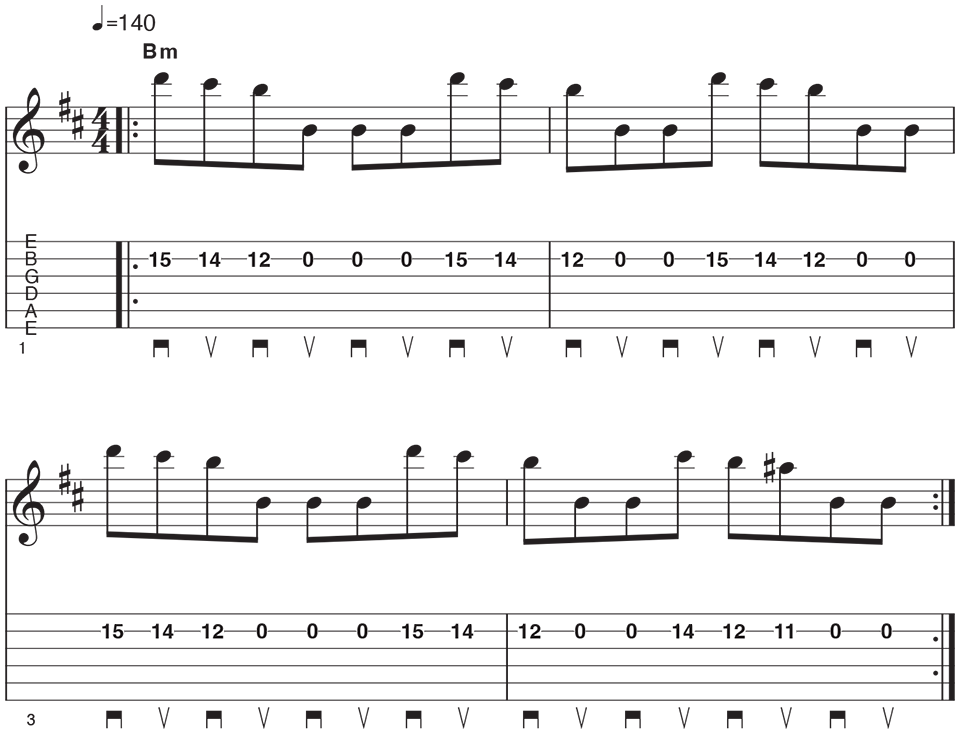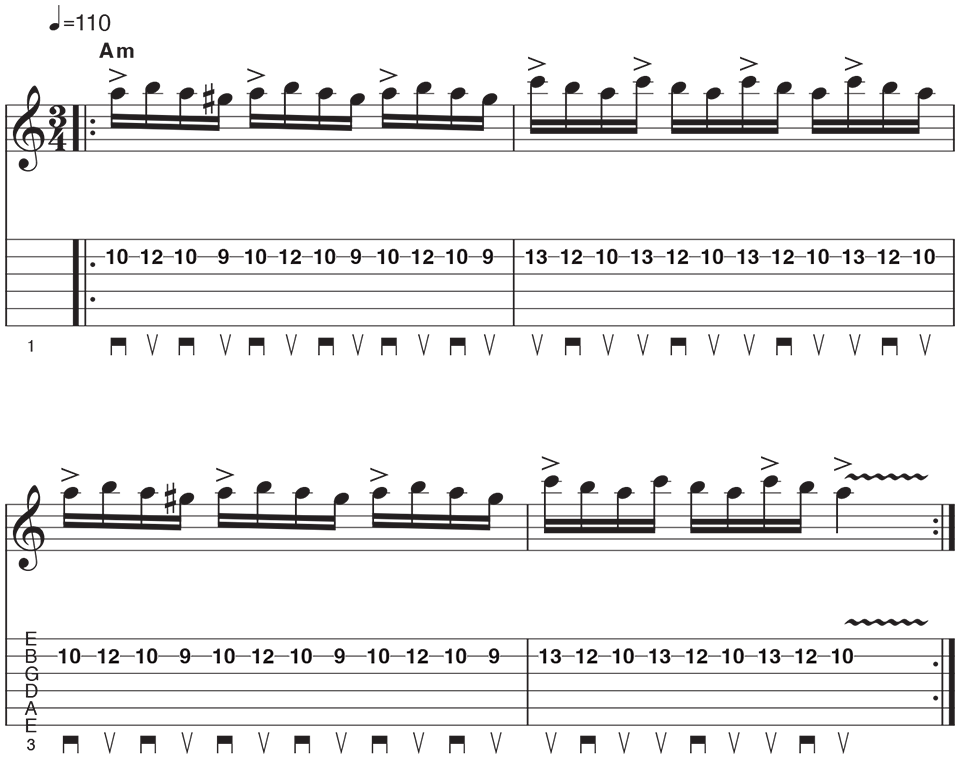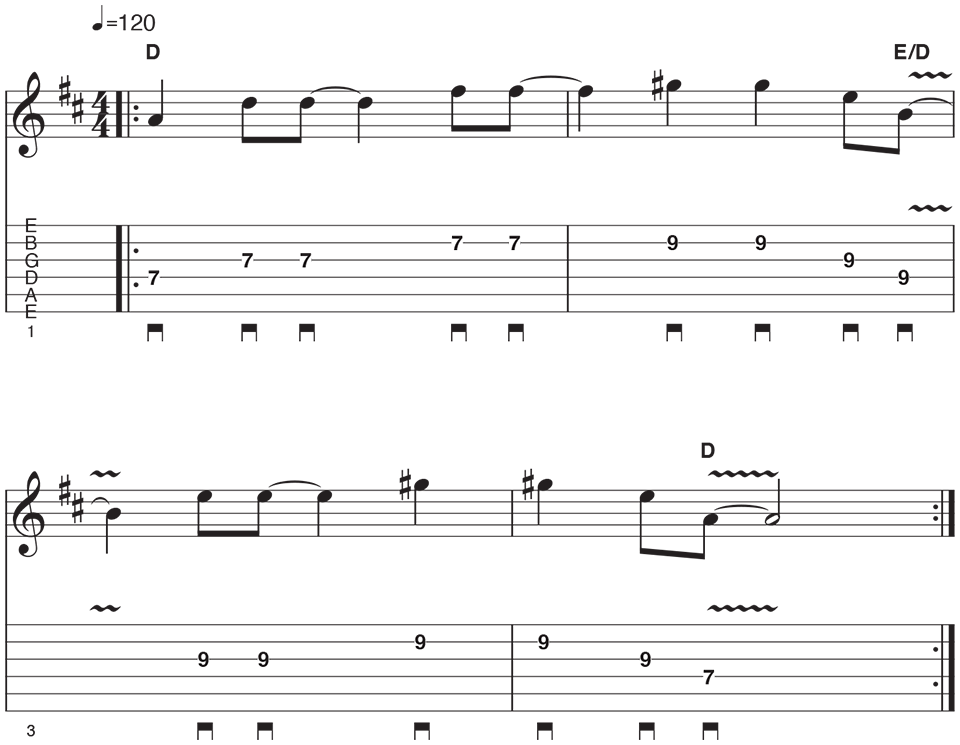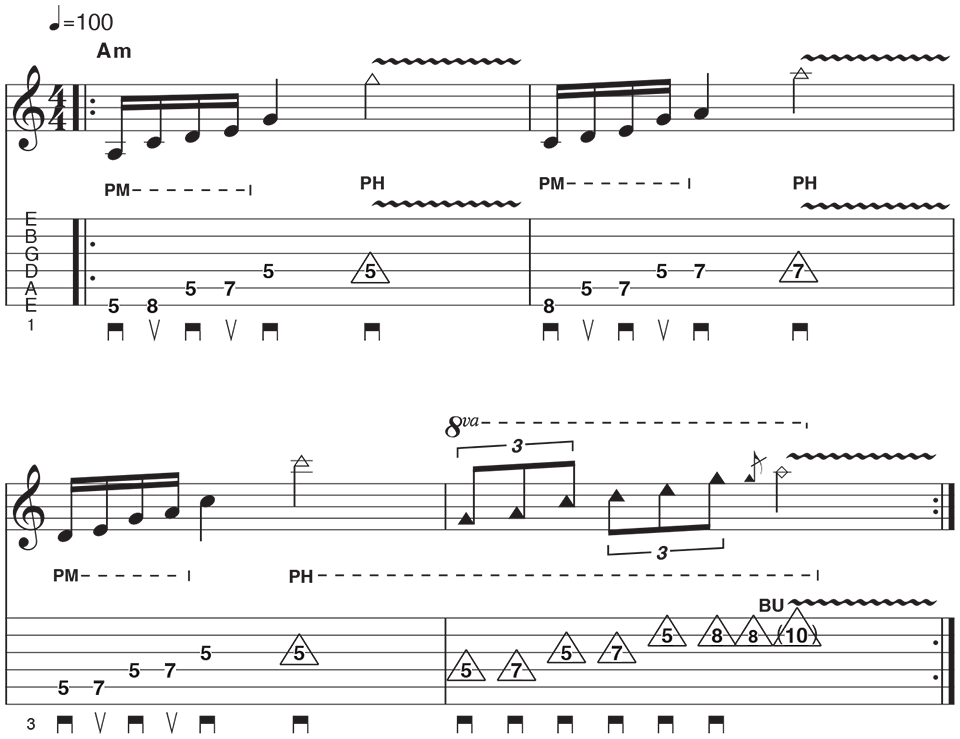“I was tired of not having a great tone. I could never figure out why I don’t sound good. So I started to experiment with how I pick”: Great tone starts with the pick – just ask Steve Vai. Here’s how honing your picking can improve your tone for free
Unlock every pick color – from warmth and brightness to the secretive clarinet tone

Guitarists know all too well about gear acquisition syndrome. But before you order that new pickup, pedal, or amp to fix your niggling tonal troubles, have you considered that your pick, even how you hold the pick, could be the answer you’re looking for? It certainly was for Steve Vai and his own playing.
“I just was getting tired of not having a great tone,” he once said. “I went through all these amplifiers. I was searching for something that sounded like some of the things I was hearing at the time. Edward Van Halen had hit the scene. You had Yngwie. So many players. And I could never figure out why I don’t sound good.
“I started to experiment with the way that I pick, where I pick, how I pick, the angle, all of these things. You get to a point where you hear it and you know it, and then the work starts.”
As Vai points out, the pick is your most tangible link to the sound you make on the guitar, and is often the tonal secret to a player’s identity. It’s difficult to imagine Brian May without the metallic rasp of his sixpence, Yngwie Malmsteen’s thunderous 1.5mm fury or Paul Gilbert’s precise pick attack which owes a lot to his pointy 1mm (or thinner) pick played at an angle.
Not only can the pick help inform your tone, it will also help hone your technique, so it makes sense to consider your options. If you want a loud sound and/or play quickly, a 1mm or thicker (even 2mm+) pick is great as it won't flex when you dig in. If you want a bright tone for acoustic or electric playing, a thinner pick such as 0.88mm with light playing is ideal. It certainly works for many strummers as well as funk legend Nile Rodgers.
This article will help you discover, as Steve Vai did years ago with his own practice, that focusing on your picking technique and hand posture can provide immense improvements for both your technical versatility as well as a much broader sound palette.
Before you get to the playing examples (from warm to bright, pinch harmonics to the secretive clarinet tone), the photos below highlight beneficial options about holding the pick, how to pick and where to pick.
All the latest guitar news, interviews, lessons, reviews, deals and more, direct to your inbox!
How to hold the pick
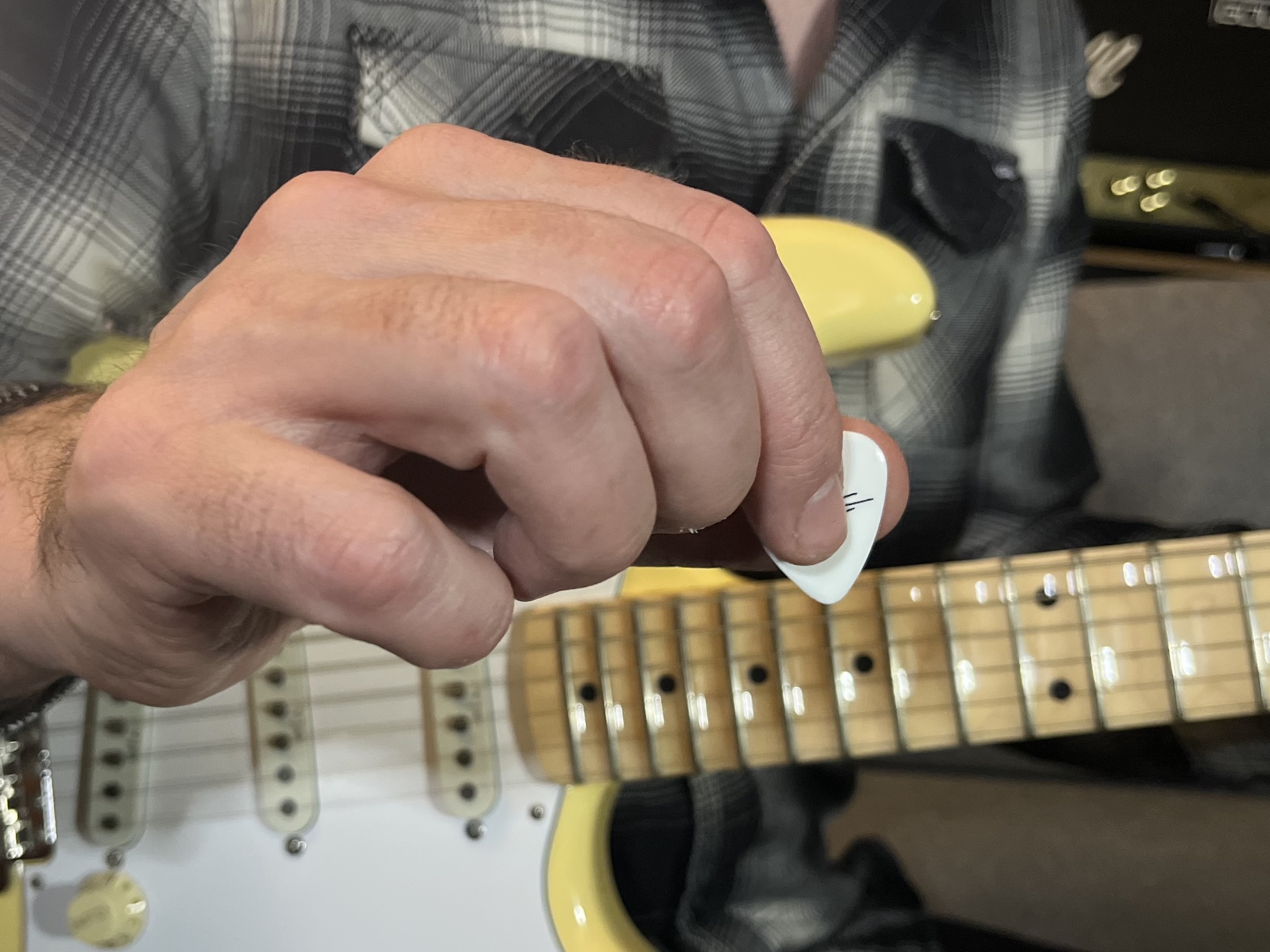
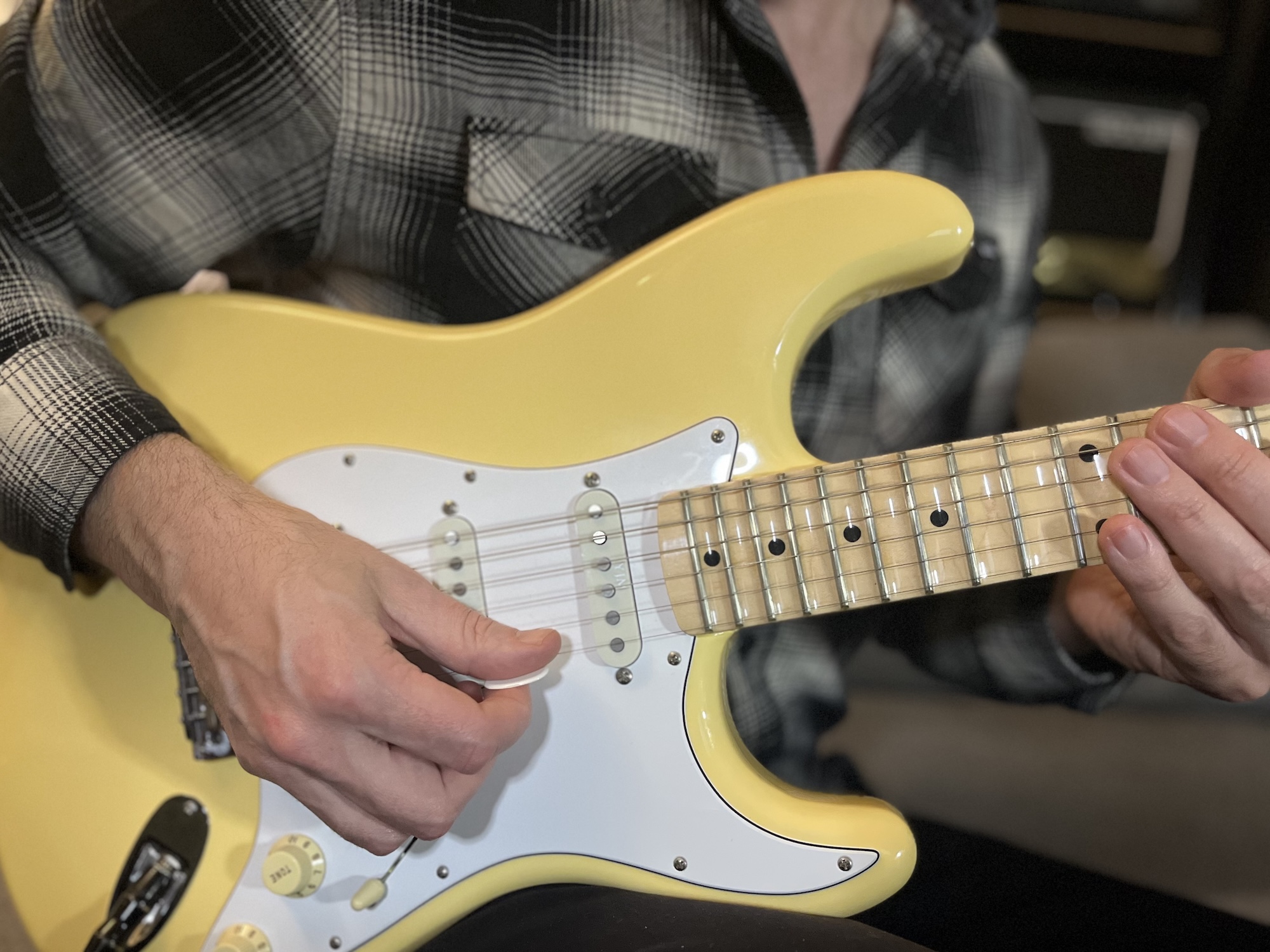

Examples
Example 1 - Flat and angled picking
Play this single string B harmonic minor [B-C#-D-E-F#-G-A#] lick with alternate picking throughout. Start with your pick flat against the string, then rotate the pick angle 45 degrees to the string so the edge of the pick cuts through the string. Listen to how the pick angle changes the tone, becoming brighter with the angled picking.
Experiment with the angle as well as the guitar's pickup selections – a Stratocaster's neck, middle and bridge pickups all sound very different and can enhance your picking choices.
Example 2 - Varying picking dynamics
This A harmonic minor scale [A-B-C-D-E-F-G#] lick is phrased firstly as 3 groups of 4 notes, then 4 groups of 3 notes. As you alternate pick, accent the initial note of each grouping with a louder down or upstroke to expand your volume dynamics.
For the accented notes (shown above the music notation with this symbol >) use your wrist to snap the pick through the string with more force and conversely pick the regular notes more softly.
Example 3 - Picking in different places along the string
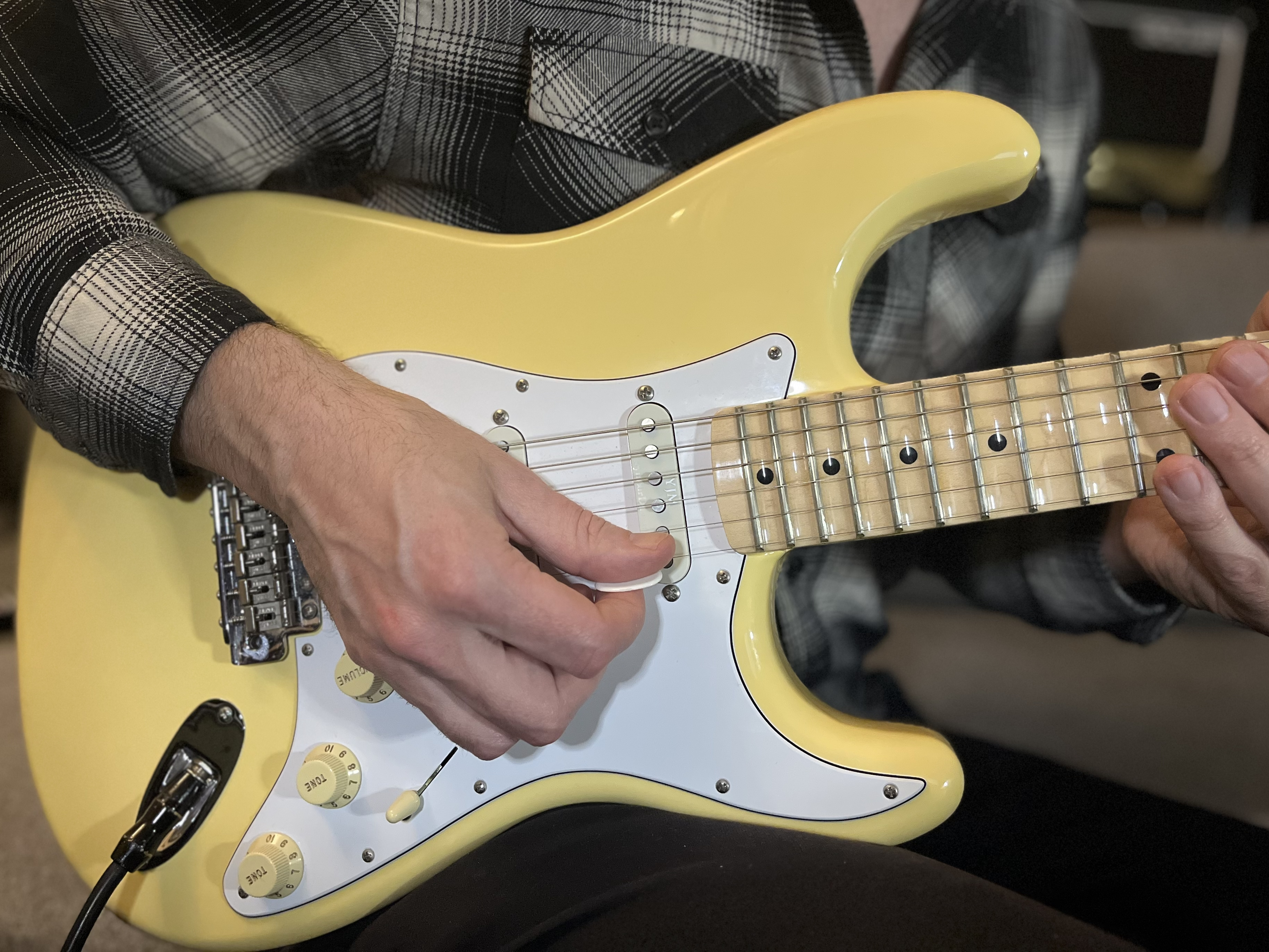
Picking over the neck pickup creates a thick and strong tone. Coupled with down picking, it's one of the roundest tones you can create. Fact: many of Hank Marvin's lead melodies with The Shadows were played by picking around the neck pickup area while the bridge pickup was selected. Why? Primarily because Hank had the whammy bar in his hand's palm so it was the logical pick-to-string contact point. Of course, it did create one of the most revered bright but warm guitar tones in electric guitar history!

Use this example to pick at different positions along the string to access different tones. The two phrases are based in the A blues scale [A-C-D-Eb-E-G].
For the first phrase, pick nearer the neck for a warmer, fuller tone then compare to the brighter attack. You may find that your preference is somewhere between these extremes, so do experiment.
Example 4 - The clarinet tone
And now to the clarinet tone – the secret sauce for connoisseur pickers. This melody is based in D Lydian [D-E-F#-G#-A-B-C#] and outlines two triad arpeggios: D major at the 7th fret and E major at the 9th fret. Maintain note separation by fretting each string with a different finger.
Next, count up 12 notes and pick the string exactly an octave higher than the fretted notes, which in this case would be at the 19th and 21st frets. Use down strokes for all notes to get the clarinet tone.
Example 5 - palm muting and pinch harmonics
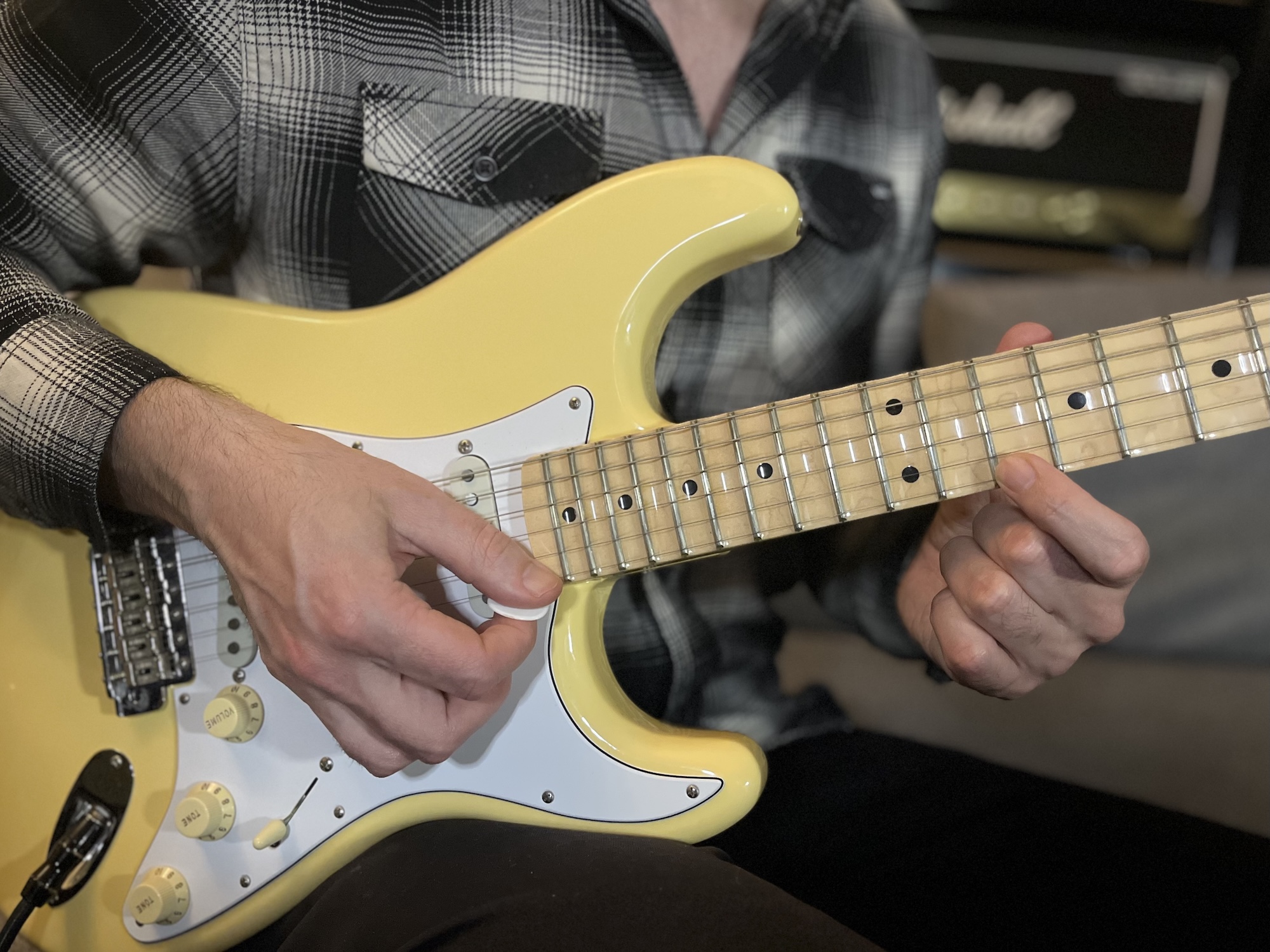
Based in A minor pentatonic [A-C-D-E-G], this incorporates palm muted notes and pinch harmonics. Use the bridge pickup for a bright tone and touch the string with the side of your thumb nearest the strings just after you've picked.
As you pick the string, lift off your thumb simultaneously. It's this very fast, double contact (pick then thumb) that generates a pinch harmonic.
Experiment with picking at different points along the string to produce different harmonic pitches (there are a wealth of different pitches to be found between the neck and bridge pickups).
If you want inspiration for pinch harmonics, check out Billy Gibbons, Eric Johnson, Zakk Wylde and Steve Vai: all know how to make a distorted guitar scream with their pick.
Example 6 - All picking approaches together
This longer piece is an amalgamation of the previous techniques. Based around the G Phrygian dominant scale [G-Ab-B-C-D-Eb-F], it starts with alternate picked accents with heavier pick strokes played every 3 notes, then every 4 notes.
Next, move your pick near the neck to give the sweep picked notes a fuller, rounder sound. Finally, pick nearer the bridge for a bright tone and to awaken squealing pinched harmonics.


Three pick masters in action
Eric Johnson - Cliffs Of Dover
This is one of the most loved guitar instrumentals ever written with some of the most articulate picking recorded, here in a ramped up live presentation.
The intro features hybrid picking for the chords while the distorted lead lines feature masterful pick based playing including precise economy picking, up picks and pinch harmonics.
The otherwise mellow tone is balanced by the zingy attack of the fabled red Jazz III, which has a sharper point than traditional picks and a harder material which provides a very quick attack.
U2 - I Still Haven't Found What I'm Looking For
The .88mm blue Herdim pick is the secret to The Edge’s early sound, not only because of the particular sound nylon picks provide, but also how he holds it.
By gripping the tip backwards, with the tip of the pick between the thumb and first finger, the strings are strummed by the textured, dimpled grip side of the pick, adding a unique scratch to the proceedings.
Holding a pick backwards isn't unique to The Edge – Pat Metheny and Robben Ford both favour this, too.
John Scofield - Blue Matter
Jazz fusion legend John Scofield uses a signature Ibanez 1mm pick which has a small teardrop style shape. His recognizable clear, articulate sound is in part due to his picking close to, or directly over, the bridge pickup.

Charlie Griffiths plays guitar in acclaimed prog-metal outfit Haken, and has a wealth of experience handling corporate and session gigs for genres as diverse as rock, heavy metal and pop. He has been a regular contributor to Total Guitar, Guitar Techniques and Guitar World for over fifteen years. His latest release is Tiktaalika - Gods of Pangaea which features stunning playing on, this time, 6-string guitars.
- Jason SidwellTuition Editor – GuitarWorld.com, GuitarPlayer and MusicRadar.com
You must confirm your public display name before commenting
Please logout and then login again, you will then be prompted to enter your display name.
